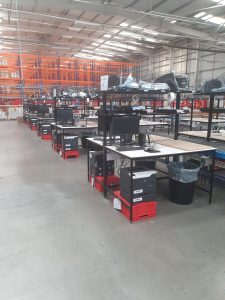Your basket is currently empty!

A warehouse located at the Port of Tyne is now operating entirely on clean, zero-carbon energy generated from renewable sources.
Warehouse 21 handles many products from well-known brands. All vehicles in the warehouse are electric using renewable energy. Energy efficient LED lights illuminate the building. Over £2 million has been invested in clean energy.
Matt Beeton, the CEO of the Port of Tyne, said:
“Offering green warehousing services is critical to our 3PL customers because it means these businesses can source the space they need, while also meeting their sustainability targets. Net Zero achievements are a key part of our Tyne 2050 strategy.”
Warehouses at ports are a way for businesses to decrease road haulage miles. Around 17% of greenhouse gases in the UK are caused by heavy goods vehicles. Goods can be moved directly from ships to port warehouses. There are over 50,000 square metres of storage capacity at the Port of Tyne’s warehouses, which provide safe, secure storage for a range of consumer and industrial products.
Almost every warehouse equipment manufacturer is aware of environmental issues. Most of the equipment they make uses tubular steel, which is recyclable. Steel manufacturers are developing ways to make the production of steel greener. Manual handling equipment, such as warehouse trolleys, require no energy sources other than humans to operate them. Large warehouse roofs are ideal for the installation of solar panels.
If warehouses source their equipment from British manufacturers, they save overseas shipping costs and energy.
You may also interested in:

Warehouse operators warned about energy compliance crisis
New energy regulations could render some warehouse space unusable by 2030 due to
The growing demand for warehouse conveyor belts
Research by Global Market Insights shows that the worldwide conveyor market was worth 5.7 billion US dollars in 2024 and is
